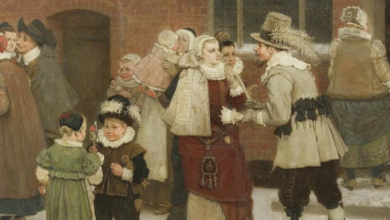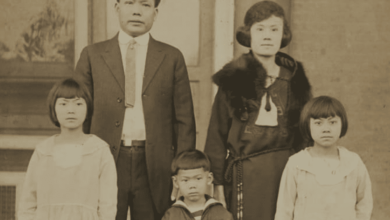Calls For Governor Hochul To Protect Whitney Estate: A Historical Perspective


 Eight conservation organizations called on Governor Kathy Hochul this week to act swiftly to protect 36,000 acres of forests, lakes and rivers in the Central Adirondacks owned by heirs to the vast Whitney and Vanderbilt family fortunes.
Eight conservation organizations called on Governor Kathy Hochul this week to act swiftly to protect 36,000 acres of forests, lakes and rivers in the Central Adirondacks owned by heirs to the vast Whitney and Vanderbilt family fortunes.
The Whitney estate, a vast tract of some of the most ecologically sensitive lands in the Adirondack Park known as Whitney Park, contains 22 lakes and ponds with more than 100 miles of undeveloped shorelines, connected by navigable rivers and streams in the Town of Long Lake, Hamilton County.
Whitney Park History
Whitney Park began as a 68,000-acre tract purchased in 1897 by wealthy lumberman from Glens Falls Patrick C. Moynehan (who owned the North Creek Hotel) and William C. Whitney, a prominent lawyer, businessman, and former Secretary of the Navy under President Grover Cleveland.
The land, previously owned by the Hamilton Park Club, was still mostly virgin forest. The partners purchased it for were able to pick it up at $1.50 an acre, about $100,000.

 Whitney died in 1904, but his son Harry continued the partnership which oversaw extensive logging and the naming of the parcel Whitney Park in 1912.
Whitney died in 1904, but his son Harry continued the partnership which oversaw extensive logging and the naming of the parcel Whitney Park in 1912.
A second harvest began in 1934 but Whitney Industries began selling the land in the 1960s, including Grampus and Mohegan lakes to Litchfield Park. Round Lake and Buck Mountain were sold to International Paper in the 1970s.
The remaining portion of Whitney Park, from Little Tupper Lake to Forked Lake, was then logged so heavily and so thoroughly that by the 1980s “almost nothing was left” according to Adirondack Wilderness Advocates.
Whitney Park was passed to Cornelius Vanderbilt Whitney, a founder of Pan American Airways, a Truman Administration official and for nearly three-quarters of a century a prominent figure in horse racing.
After he died, his widow Marylou Whitney, a Manhattan socialite and a frequent visitor at Saratoga Springs during the racing season, was the last member of the Whitney family to administer Whitney Park.
In the 1990s she proposed a fifty-lot subdivision on the 15,000 acres surrounding Little Tupper Lake. “Such a development plan was so alarming that the state intervened and acquired all of the lands within the project’s scope,” Adirondack Wilderness Advocates notes.
Thousands of those acres, now part of the William C. Whitney Wilderness, were added to the Forest Preserve in 1998, including most of Little Tupper Lake, all of Rock Pond, and a stretch of forest that created a land bridge with the Lake Lila parcel once owed by William Seward Webb.
It is now a premier paddling destination with three of the largest lakes in the Forest Preserve within its boundaries. The remaining 36,000 acres of Whitney Park border the Whitney Wilderness and are connected by rivers and streams.
Worries About The Future of Whitney Park
After Mary Lou Whitney’s death in 2019, Whitney Park came into the hands of John Hendrickson, who she was married to for 22 years. In 2021, he proposed to divide the property into 11 lots and sell each one to separate parties.
Conservationists objected to this plan, saying that its pristine forests and waters would remain healthier and free from invasive species if it was left intact. When Hendrickson died suddenly at age 59 in August of 2024, the future of the parcel became uncertain.

 Whitney Park has been listed as a high-priority for state acquisition/protection since the NYS Open Space Protection Plan was first adopted in 1992, due to its high-quality wildlife habitat and great potential for public recreation and tourism.
Whitney Park has been listed as a high-priority for state acquisition/protection since the NYS Open Space Protection Plan was first adopted in 1992, due to its high-quality wildlife habitat and great potential for public recreation and tourism.
“This historic tract in the heart of the Adirondack Park will be sold by a trust seeking to sell these lands in the months ahead,” the conservation groups wrote to the Governor. “We ask that you and your Department of Environmental Conservation take a leading role in negotiating the conservation of Whitney Park through purchase as Forest Preserve, as conservation easement, or a combination of the two.”
Because there are several private homes on the estate, the groups said they expected any conservation plan to contain a mix of public and private investments, meaning part of the tract would be likely to remain in private ownership.
The letter was signed by Raul “Rocci” Aguirre, Executive Director of the Adirondack Council; Peter Bauer, Executive Director of Protect the Adirondacks!; Roger Downs, Policy Director, Sierra Club Atlantic Chapter; Adrienne Esposito, Executive Director of Citizens Campaign for the Environment; David Gibson, Managing Partner with Adirondack Wild: Friends of the Forest Preserve; Julia Goren, Acting Executive Director of the Adirondack Mountain Club; Patrick McClellan, Policy Director, New York League of Conservation Voters; and, Pete Nelson, Chair, Adirondack Wilderness Advocates.
The groups also say that the State’s acquisition would advance the goals of the Open Space Plan, State Wildlife Action Plan, and 30×30 plans and a sweeping review and updates to the state’s Endangered Species list.
“Whitney Park’s interconnected waterways are not only part of a historic 19th century canoe route, but provide great ecological connectivity throughout the central Adirondack Park,” the organization leaders wrote.
The groups offered the Governor their assistance in completing the transaction to acquire Whitney Park for the people of New York State.
“In many ways as goes Whitney Park, so goes the Adirondack Park.” said Peter Bauer, Executive Director of Protect the Adirondacks! “Missing this historic opportunity and failing to protect these lands is not an option.”
Pete Nelson, of Adirondack Wilderness Advocates said “To paddle in the William C. Whitney Wilderness or on Forked Lake is to be drawn to those lands, to want to traverse an intact, interconnected tapestry of water and forest that feels endless.”
Adirondack Wild’s Dave Gibson said that multiple governors have hoped to conserve this landscape. including Republican Governor George Pataki, who conserved a third of it. “Now Governor Hochul has the chance to complete this vitally important work,” Gibson said.
“The Whitney Estate is the center of one of the wildest regions of the Adirondack Park and has been a conservation priority for the Adirondack Council since we published our 2020 VISION plan for completing the Wilderness System of the Forest Preserve in 1990,” said Aguirre of the Adirondack Council. “It’s the last of the very large, vulnerable parcels remaining unprotected in the Adirondacks, finding a conservation solution for this land will be critical to enhancing the wilderness legacy of the Park.
Illustrations, from above: Map of Whitney Park (provided by Protect the Adirondacks); Three Private Preserves in the Adirondack Mountains, Matthews-Northrup Works, ca. 1912 (NY Heritage); and Salmon Lake in the foreground, part of the Whitney Park tract, with Rock Lake and Little Tupper Lake in the background.
Source link





